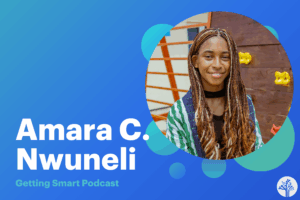Progress Report: Ohio Straight A Fund

By: Michael Harlow
With the rapid pace of innovation sweeping our schools, it seems like ancient history already. Back in January of 2013, Ohio Governor John Kasich introduced the idea of a competitive grant challenge to infuse innovative practices into Ohio’s K-12 schools. The measure earned broad bi-partisan support and was one of the few to make it from Governor Kasich’s budget blueprint through the legislative process, even though it was controlled by his fellow Republicans in both chambers. The Straight A Innovation Fund, as it became known, awarded nearly $100,000,000 in Round One grants last December. Round Two grants totaling nearly $150,000,000 were awarded in June.
Awarded during the last school year, most districts and students won’t see the fruits of this labor until this school year. Across Ohio, teachers and administrators have been hard at work using these dollars to foster better learning environments for students from urban, suburban, small-town and Appalachian backgrounds. Most if not all of the Round One grants look to be on track to deliver sustainable innovations, having been kick-started with some Straight A Funds. A quick look at five innovative applications focused on improving student achievement and cutting costs through personalized learning follows.
In North Canton, Dr. Richard Ross, the State Superintendent for Public Instruction, toured the re-designed learning spaces at Hoover High School recently. Devices such as an eno board, an interactive whiteboard, have been installed to facilitate blended learning in the classroom. Teachers are being trained on the devices, something that often comes up short when innovative devices are purchased. Students are learning to adapt as well. They showed Dr. Ross how easily and quickly they can rearrange new, modular furniture to create the learning environment needed for that day’s lessons. One of the components of the Straight A Fund is for districts to document their work so that their experiences can be shared with others through “learning exchanges,” so that other districts need not re-invent the wheel. In North Canton, the students in broadcast journalism are on it.
In Beavercreek, a suburb of Dayton, the district has purchased iPads for all students and also contracted with eSpark Learning to develop individualized learning plans for each student. Other districts have already come to Beavercreek to learn more about this innovation. Beavercreek Superintendent Dr. Bill McGlothlin sees his district as a poster child for personalized learning in Ohio.
In Northwest Ohio, a consortium of 7 districts, including a close-in suburb facing many of the same challenges as its large urban neighbor Toledo, have teamed up to develop their own electronic textbooks for core subjects in grades 9-12. Such digital content will replace hard-copy textbooks and help create classroom environments better suited for personalized learning. Another consortium in the rural northwestern part of the state is using its funds to boost professional development to enhance online learning and work with businesses to better train students for the jobs in demand today.
Across Appalachia, 27 school districts containing 48,000 students have banded together to use blended learning and personalized learning to increase access to dual enrollment offerings. Battelle for Kids manages the Ohio Appalachian Collaborative. One of the major undertakings is to get high school teachers certified to teach college-level courses, as teachers with such a valuable credential were lured to higher-paying suburban districts in the past. It was recently reported that 64 teachers have been certified, more than halfway to the goal of 110. Teachers are earning the credentials through online learning, giving themselves an important insight into how to instruct in this environment along the way. Pooled purchasing and the ability to offer courses across district boundaries have made infrastructure and instructional expenses far more manageable. As devices are distributed, wiring is improved, and classrooms are retro-fitted into learning labs, the collaborative expect to offer more than 100 dual-enrollment courses across Appalachian Ohio.
Districts such as these, and others pursuing similar projects, are doing more than simply buying devices and wiring schools to bring more technology into the classroom. Such innovative districts have brought the best and most effective plans forward and are using the funds to address many underlying, systemic needs that will facilitate personalized learning in Ohio. They’re getting teachers the proper training and credentialing, modifying classroom space for the most optimal use of the new technology, and pooling their financial and intellectual resources to develop the best learning systems for their students.
The competition was intense—just 4% of applications were funded in Round One. After passing muster for fiscal sustainability, and another review on programmatic merits, 24 projects received funding. The grants supported a number of innovative practices. Dollars went for more than personalized instruction. Some successful grantees had developed efficient and effective pilot programs to comply with new mandates around third grade literacy, teacher evaluations, online testing and even childhood nutrition. However, a sizable amount went to increased personalized learning opportunities. As these projects are designed to be replicable, other interested schools such as the 23 member organizations in the Ohio Blended Learning Network, will be watching closely.
Additionally, Round Two grants, just recently funded, will be bearing fruit soon. Dr. Ross, the state superintendent, says he is looking for “hard evidence” to convince the legislature to award more grants for innovation in the upcoming biennial budget. Due to the hard work of Ohio’s leading educational innovators, he should have little trouble finding it.
Michael Harlow, a consultant in education and workforce policy, was elected to the Northwest Local Board of Education in November 2013. An independent consultant, he has done work for the Ohio Blended Learning Network, U.S. Department of Labor and KnowledgeWorks, a Cincinnati-based social enterprise devoted to improving public education. Since 2007, he has produced a daily digest of news on education issues; The Harlow Report is cited and shared by numerous education policy leaders.






0 Comments
Leave a Comment
Your email address will not be published. All fields are required.